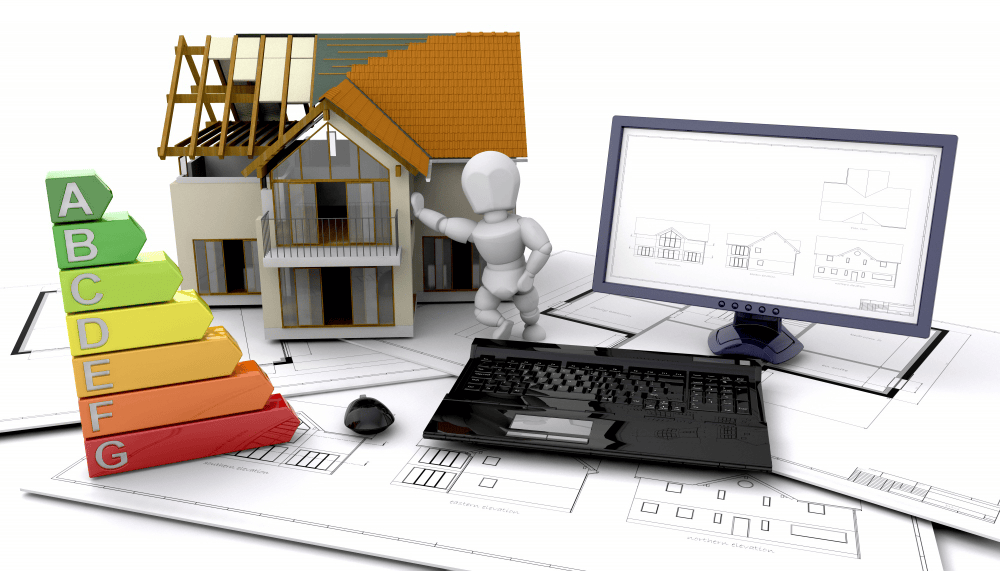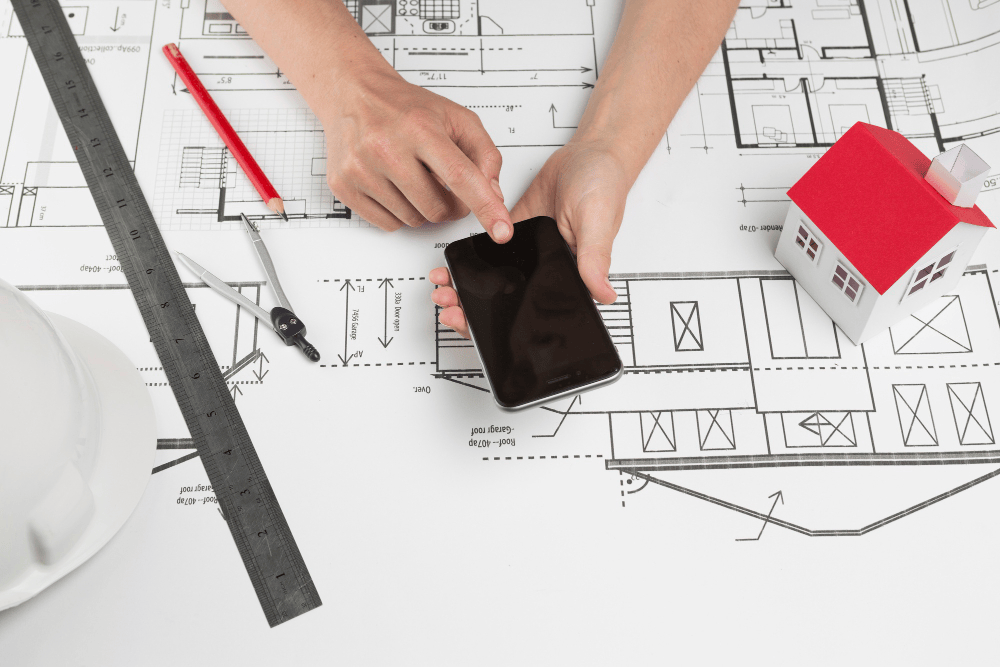Cost to Build a House in USA
Building a home in the USA is a dream for many—but turning that dream into reality starts with one key factor: understanding the construction cost. In 2025, the average cost to build a house in the U.S. ranges between $150 to $300 per square foot, depending on location, design complexity, labor rates, and material choices. That means a standard 2,000 sq. ft. home could cost between $300,000 to $600,000—excluding land.
Our Estimation Services
At Utopian Takeoffs, we specialize in delivering accurate and detailed construction estimates that help you plan, budget, and build smarter. Whether you’re a contractor, developer, or homeowner, our expert takeoff services reduce costly errors, prevent material waste, and streamline project timelines. From garage conversions to full custom builds, we analyze every detail—so you can make confident decisions and stay on budget. Let us handle the numbers while you focus on building your dream home.From a construction estimator’s point of view, the real challenge lies in accurate construction takeoffs, realistic budgeting, and smart planning. Every square foot counts, and without detailed estimates, costs can quickly spiral out of control.
Table of Contents
For example, a homeowner in Texas planning a modern farmhouse layout saved over $25,000 just by using Utopian takeoffs estimation and takeoff services, which helped identify material overages and reduce change orders during construction.
Key Takeaways
- National Average (2025): $150–$300 per sq. ft.
- Factors That Affect Cost: Location, materials, labor, permits, architectural complexity
- Why Estimating Matters: Helps avoid budget overruns, delays, and material shortages
Pro Tip: Use professional takeoff services to improve cost accuracy and bidding success
Average Cost to Build a House in the USA 2025
If you’re planning to build a new home in 2025, understanding the average construction costs is crucial before you break ground. As an experienced construction estimator, I’ve worked with homeowners, general contractors, and project managers across the U.S. to develop clear, data-backed estimates—and here’s what the numbers show this year.
National Averages (2025)
- Standard build: $150 – $250 per square foot
- Custom homes: $250 – $500+ per square foot
- Modular homes: $100 – $200 per square foot
- Total cost range (for 2,000 sq ft): $280,000 – $740,000
These figures include basic construction, materials, labor, permitting, and general contractor fees—but they can vary significantly depending on location, land conditions, design complexity, and material choices.
Real-World Insight
In early 2025, we assisted a residential client in Arizona with a modern 2,200 sq. ft. build. Their initial builder quote came in at $590,000. After a detailed construction takeoff and cost breakdown, we identified potential material redundancies and reworked labor cost allocations. The result? A revised estimate of $535,000, saving the client over $55,000—without compromising on design or quality.
Why Outsourcing Takeoff Services Pays Off?
Whether you’re building from scratch or customizing plans, having a professional construction estimator on your side offers a big advantage:
- Accurate material takeoffs prevent over-ordering and delays
- Detailed cost forecasting aligns budget with design goals
- Optimized labor planning cuts down on inefficiencies
- Ideal for contractors bidding on residential projects
- Works great with both traditional and design-build models
Pro Tip: If you’re a GC or project owner, don’t rely solely on ballpark estimates. Leverage outsourced estimation services to access detailed breakdowns for everything—framing, HVAC, roofing, flooring, and more. This increases bid accuracy and reduces costly surprises during construction.
Cost Breakdown by Category (Garage Conversion Estimator – 2025 Guide)
One of the most common questions I receive as a construction estimator is: “What does a garage conversion really cost, and where does the money go?” Whether you’re a general contractor bidding on a project or a homeowner planning your budget, breaking down the cost by category is essential for transparency and accuracy. Here’s a 2025 estimate based on national averages and real-world garage conversion data.
Garage Conversion Cost Breakdown
| Category | Estimated Cost Range |
| Site Work & Permits | $10,000 – $30,000 |
| Foundation | $15,000 – $40,000 |
| Framing | $25,000 – $65,000 |
| Plumbing & Electrical | $30,000 – $50,000 |
| Interior Finishes | $40,000 – $90,000 |
| Exterior (Roof, Windows) | $20,000 – $50,000 |
| HVAC | $7,000 – $15,000 |
| Final Touches | $5,000 – $15,000 |
Real-World Example
In early 2025, a client in California wanted to convert their detached 2-car garage into a 500 sq. ft. in-law suite. The initial builder estimate was vague and lump-sum based. Once we completed a detailed garage conversion takeoff, we were able to itemize every component—including upgraded insulation, electrical rewiring, and split-unit HVAC install. This clarity allowed the homeowner to cut costs by $18,000 by revising framing materials and finish options—without sacrificing quality.
Why Cost Breakdown Matters?
Detailed cost categories don’t just help with budget management—they give clients and contractors the insight needed for:
- Smarter design decisions before construction begins
- More accurate material takeoffs and supplier orders
- Permitting and inspection preparedness
- Easier client communication and approval process
- Precise estimating for change orders and upgrades
How Estimators and Takeoff Services Help?
Professional estimating services deliver a line-by-line breakdown that identifies material quantities, labor hours, and MEP (mechanical, electrical, plumbing) scope. Whether you’re a builder looking to optimize bid competitiveness, or a homeowner trying to avoid mid-project surprises, outsourcing this task ensures cost control and confidence.
Factors That Affect House Construction Costs (2025 Guide)
When it comes to estimating the cost to build or convert a home in 2025, there’s no one-size-fits-all price tag. As a seasoned construction estimator, I’ve seen firsthand how specific variables can make or break a project budget. Whether you’re planning a garage conversion, a new custom build, or managing multiple residential projects, understanding these cost drivers is critical to producing accurate takeoffs and bids.
Below are the key factors that influence home construction costs in today’s market:
Location Matters
- Urban vs Rural: Building in a city often means higher permit fees, land costs, and stricter zoning requirements.
- Labor Rates: Areas with skilled labor shortages or unionized trades typically have higher costs.
- Local Codes & Regulations: Each municipality has unique inspection standards and permit processes, which can affect both timeline and pricing.
Estimator Tip: A client in New York paid 15% more in framing costs than a similar project in Indiana due to higher local labor rates and union regulations.

Design Complexity
- Custom Designs: Unique architectural features, vaulted ceilings, or split-level layouts drive up costs.
- Engineering Requirements: Complex structural loads may require special beams, soil tests, or seismic considerations.
- Garage Conversions with Additions: Adding square footage rather than just converting existing space increases both material and labor demand.
Takeaway: Simpler floor plans usually equal smaller budgets.
Material Choices
- Basic vs Premium Finishes: Vinyl flooring vs hardwood, laminate counters vs quartz—your selections impact both price and long-term durability.
- Energy-Efficient Upgrades: Solar panels, advanced insulation, and smart HVAC systems add upfront cost but can lower lifetime utility expenses.
- Material Availability: In-demand products may have extended lead times and dynamic pricing.
Real Insight: One project in Nevada saw a 12-week delay because custom windows weren’t available—this cost the GC an extra $8,500 in rescheduling fees.
Labor Availability
- Skilled vs General Labor: Specialized trades (e.g., electricians, HVAC techs) cost more but are required by law for code compliance.
- Union vs Non-Union Labor: Labor costs can increase by 20–30% in union-dominated regions.
- Subcontractor Demand: High construction activity in your area can lead to higher subcontractor quotes.
Estimator Pro Tip: Always confirm labor availability and rates during pre-construction planning to avoid inflated bids or crew shortages later.
Inflation & Supply Chain Volatility (2025)
- Material Costs: Lumber, steel, copper, and drywall prices remain unstable post-pandemic.
- Global Shipping Delays: Imported materials like tile and fixtures often experience 3–6 week delivery delays.
- Fuel Prices: Increased fuel costs directly impact delivery and equipment operation expenses.
Planning Insight: In 2025, we’ve seen some GCs lock in bulk pricing contracts early through estimators to hedge against future spikes.
Estimator Insight
Always factor local building codes, permit requirements, and inspection timelines into early cost estimates. Failing to do so could lead to mid-project redesigns, change orders, or delays—all of which are budget busters.
As professional construction estimators, our takeoff services deliver precise material and quantity calculations tailored to your project’s scope. We analyze architectural and structural plans to ensure nothing is missed—from framing to finishes. Our detailed takeoffs help contractors, developers, and homeowners avoid costly overruns, reduce waste, and improve bidding accuracy. With localized pricing and digital tools, we turn complex drawings into clear, build-ready data.
How Estimators Calculate House Building Costs? (2025 Guide)
As a construction estimator with years of hands-on experience in residential projects, I can tell you that accurate house cost estimating is both a science and a skill. Whether you’re building from scratch or planning a garage conversion, the goal remains the same: deliver a reliable, transparent cost projection that helps contractors win bids and homeowners stay within budget.
Here’s how I approach the estimating process—step-by-step—using industry best practices, localized pricing, and advanced construction takeoff software.
Review Architectural & Structural Plans
Before any numbers are crunched, I start by thoroughly reviewing the blueprints, elevations, and engineering drawings. This helps identify:
- Design complexity
- Load-bearing walls
- HVAC or plumbing rerouting
- Site prep and grading requirements
Perform Quantity Takeoffs for All Components
Next, I use digital takeoff tools (like PlanSwift or Bluebeam) to extract accurate quantities for:
- Concrete (slab/foundation)
- Framing (studs, joists, beams)
- Roofing, siding, windows, doors
- Interior finishes (drywall, paint, flooring)
- MEP systems (Mechanical, Electrical, Plumbing)
Every square foot, linear foot, and cubic yard counts—especially when estimating garage conversions, where space efficiency is critical.
Apply Localized Material & Labor Rates
National averages are helpful, but local pricing gives you real-world accuracy. I pull labor rates and material costs based on:
- ZIP code pricing databases
- Union vs non-union labor
- Seasonal fluctuations and supplier trends
Pro Tip: In 2025, inflation has made it essential to update pricing quarterly, not annually.
Identify Scope Gaps & Potential Overruns
One of the biggest risks in residential projects? Scope creep. That’s why I flag:
- Unclear details in design documents
- Owner-requested changes (e.g., upgraded finishes)
- Incomplete permit or inspection requirements
Example: On a recent California project, spotting a missing waterproofing spec in the plan saved the client from a costly $8,500 retrofit.
Prepare a Detailed BOQ or Cost Report
Finally, I compile all data into a BOQ (Bill of Quantities) or a line-item cost report tailored to the project. This includes:
- Scope descriptions
- Unit costs and total prices
- Subcontractor quotes
- Markups, contingencies, and timelines
This report becomes the foundation for client approvals, subcontractor bidding, and budget control.
Why Does It Matters?
For general contractors, developers, or homeowners, working with a professional estimator provides:
- More accurate budgeting and risk mitigation
- Smarter material procurement and scheduling
- Better ROI through reduced waste and error
Conclusion
Understanding the cost to build a house in the USA in 2025 requires more than just ballpark figures—it demands precise planning, accurate material takeoffs, and expert cost analysis. With construction expenses varying widely by location, design, and labor, professional estimating services like Utopian Takeoffs offer the clarity and control you need. Whether you’re building new or converting existing space, working with a skilled estimator helps reduce risk, avoid budget surprises, and keep your project on track from start to finish.
FAQs
What is the average cost to build a house in the USA in 2025?
In 2025, the cost ranges from $150 to $300 per square foot, depending on location, materials, and design complexity. A standard 2,000 sq. ft. home may cost between $300,000 to $600,000, excluding land.
What factors influence the construction cost of a house?
Major factors include location, labor rates, material quality, design complexity, and permit requirements. Each of these can cause significant variations in the final cost.
Why should I hire a construction estimator or takeoff service?
Estimators provide detailed quantity takeoffs and cost breakdowns, helping you avoid budget overruns, reduce material waste, and improve project planning accuracy from the start.
How can I save money during the home-building process?
Work with a professional estimator to identify material redundancies, optimize labor, and avoid change orders. Even small design adjustments can lead to significant savings.
How are house construction costs calculated by estimators?
Costs are calculated by reviewing blueprints, performing digital takeoffs, applying localized labor and material rates, and generating a Bill of Quantities (BOQ) that outlines every project component.

